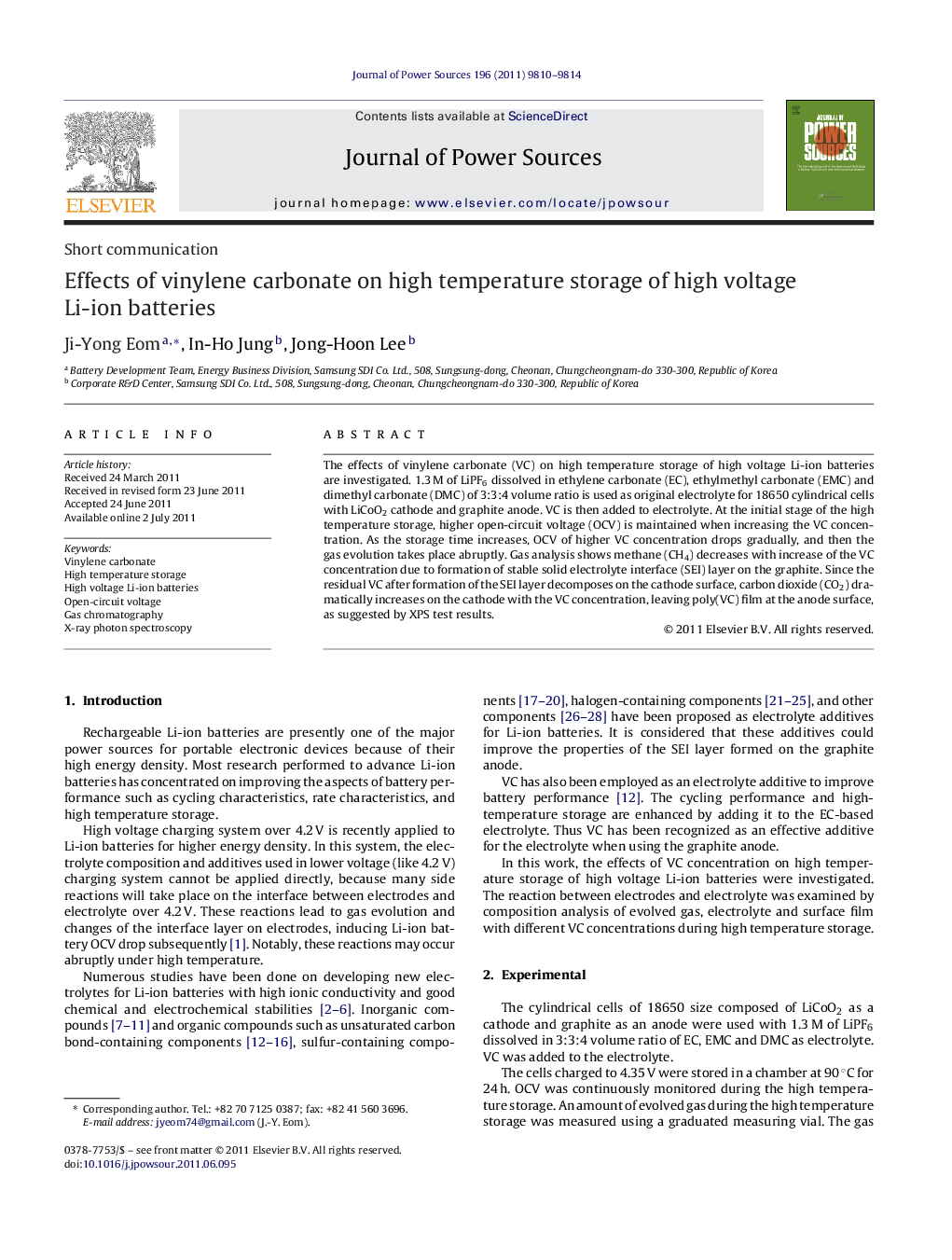| Article ID | Journal | Published Year | Pages | File Type |
|---|---|---|---|---|
| 1284743 | Journal of Power Sources | 2011 | 5 Pages |
The effects of vinylene carbonate (VC) on high temperature storage of high voltage Li-ion batteries are investigated. 1.3 M of LiPF6 dissolved in ethylene carbonate (EC), ethylmethyl carbonate (EMC) and dimethyl carbonate (DMC) of 3:3:4 volume ratio is used as original electrolyte for 18650 cylindrical cells with LiCoO2 cathode and graphite anode. VC is then added to electrolyte. At the initial stage of the high temperature storage, higher open-circuit voltage (OCV) is maintained when increasing the VC concentration. As the storage time increases, OCV of higher VC concentration drops gradually, and then the gas evolution takes place abruptly. Gas analysis shows methane (CH4) decreases with increase of the VC concentration due to formation of stable solid electrolyte interface (SEI) layer on the graphite. Since the residual VC after formation of the SEI layer decomposes on the cathode surface, carbon dioxide (CO2) dramatically increases on the cathode with the VC concentration, leaving poly(VC) film at the anode surface, as suggested by XPS test results.
► VC addition suppress the OCV drop during the high temperature storage. ► VC addition cause the gas evolution during the high temperature storage. ► VC addition form the stable SEI layer on the graphite. ► The residual VC after formation of the SEI layer decompose on the cathode surface.
